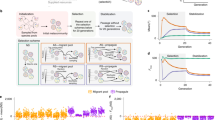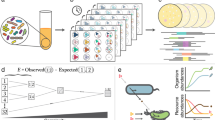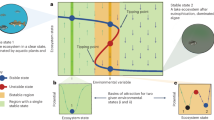Abstract
Background/Question/Methods
Molecular and bioinformatics techniques are revealing the rich diversity of microbial communities. These approaches generate valuable data that ecologists could use to develop and test theories that apply to a large fraction of living organisms. However, the complexity of microbial community data is a challenge to achieving this integration. A fundamental question in microbial ecology is how to aggregate microbial communities so that their taxa may be represented in theoretical models. Recently, models based on microbial traits have been developed to tackle this question. Such models may represent microbial taxa as functional groups or stochastic assemblages with a distribution of trait values. Here, I define these two model types and show how they can be used to make predictions about the function of complex microbial communities. I focus on organic matter decomposition and nutrient mineralization because this function is typically driven by complex microbial communities.
Results/Conclusions
When applying ecological theory to predict rates of organic matter turnover, complex communities can be aggregated based on relevant traits, such as the ability to produce extracellular enzymes. Ecological and evolutionary theories provide a framework for predicting the distribution of these traits across time and space. For example, theories on ecological succession may predict the temporal progression of enzyme traits that occur in association with a decomposing substrate. Dispersal parameters from island biogeography theory may determine the movement of enzyme traits across the microbial landscape. Evolutionary theory can be used to predict the appearance and loss of enzyme traits due to selective pressures in microbial ecosystems. All of these theories then determine the abundance of particular functional groups, or the means and variances of trait distributions that directly affect ecological function. Functional group models may be useful in simple systems, but stochastic models based on distributions may be more relevant for complex communities with a diversity of continuous traits and many unidentified members.*The audio track for talks in this symposium may be obtained at the following web address:**https://sites.google.com/site/esa2010symposium13audiocontent/esa2010-symposium13-audio-content*
Similar content being viewed by others
Article PDF
Author information
Authors and Affiliations
Rights and permissions
About this article
Cite this article
Allison, S. Integrating microbial community data with ecological theory. Nat Prec (2011). https://doi.org/10.1038/npre.2011.5511.1
Received:
Accepted:
Published:
DOI: https://doi.org/10.1038/npre.2011.5511.1



